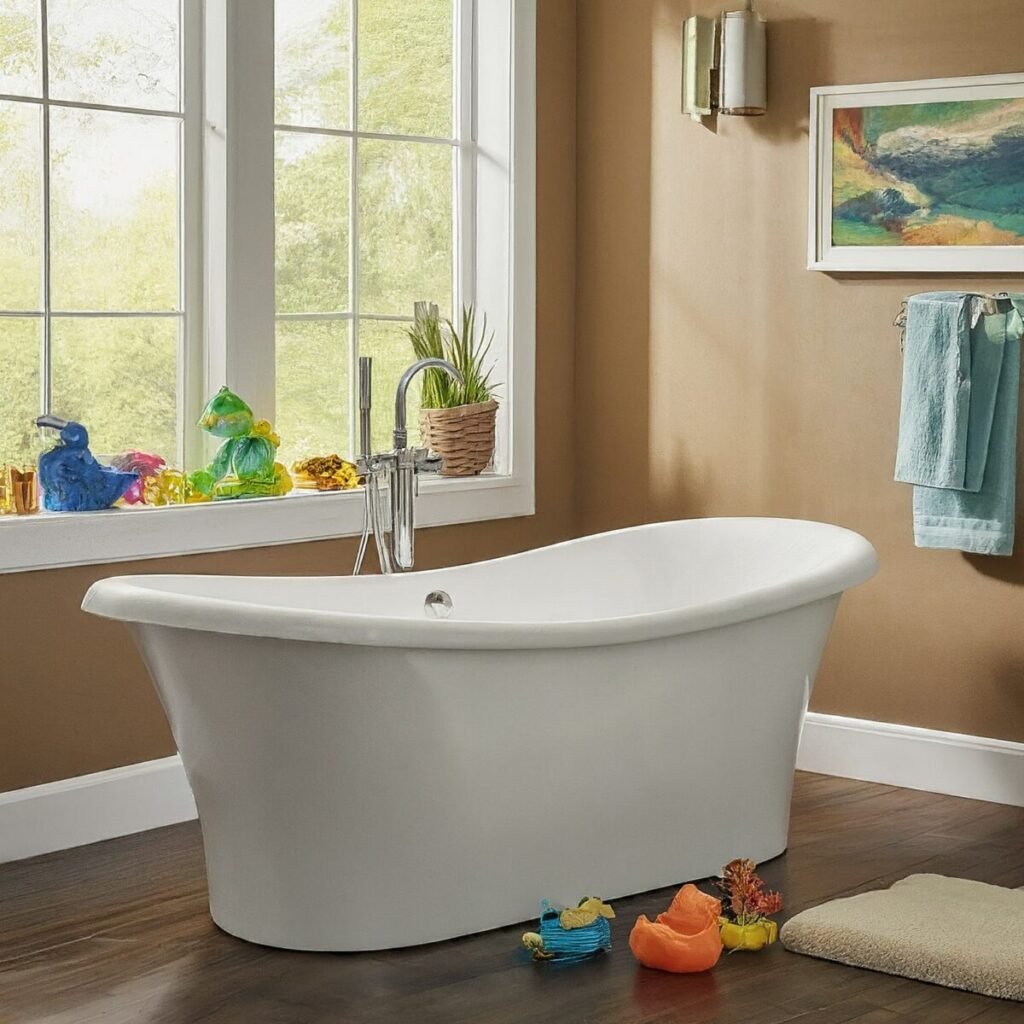As a responsible parent, I believe that ensuring the safety of my family is my top priority. That’s why I have implemented essential family safety protocols to protect my loved ones from potential accidents and injuries.
In this guide, I will share valuable tips and guidelines on child safety, home safety, and emergency preparedness.
- Implementing family safety protocols is crucial for protecting your family from accidents and injuries.
- Child safety guidelines, such as using seat belts and child safety seats, significantly reduce the risk of injuries in motor vehicle accidents.
- Home safety procedures, including fall prevention measures and window safety, help create a safe living environment.
- Developing a family emergency plan and being prepared for emergencies can save lives.
- Installing alarm systems and carbon monoxide alarms enhance home security and protect against potential hazards.
By following these essential tips and guidelines, you can create a safe and secure environment for your family. Let’s prioritize their well-being by implementing effective family safety protocols.
Table of Contents
Buckle Up for Safety

Motor vehicle accidents are one of the leading causes of death, especially for young people.
According to the National Safety Council (NSC), seat belts are one of the most effective ways to reduce the risk of fatal injury in a car accident.
By using seat belts, you can significantly increase the chances of surviving a crash.
When it comes to ensuring the safety of your little ones, child safety seats are crucial.
According to the NSC, child safety seats can reduce the risk of fatal injury by about 70 percent in children under the age of one.
It’s important to choose the right type of seat for your child’s age and size, and to install it correctly in your vehicle.
Table: Car Seat Recommendations by Age
| Age | Type of Seat |
|---|---|
| Infants < 1 year | Rear-facing seat |
| Toddlers 1 – 3 years | Forward-facing seat with harness |
| Preschoolers 4 – 7 years | Booster seat |
| Children 8 – 12 years | Seat belt |
Remember, seat belts and child safety seats are not just recommendations—they are essential safety measures that can protect you and your loved ones in the event of a motor vehicle accident.
Next in our guide, we will explore how to protect your children while driving and the importance of preventing drunk driving.
Protect Your Children While Driving

When it comes to ensuring the safety of your children while driving, there are several important measures to consider.
One of the most crucial factors to address is drunk driving, as it remains a major cause of auto accidents.
Approximately 40 percent of auto accident deaths involve alcohol. As a responsible parent, it is crucial to never drink and drive, especially when children are in the car.
Designating a nondrinker as the driver or calling a cab if you will be drinking can help protect your children from the dangers of drunk driving.
Child passenger safety is another critical aspect to focus on. It is essential to ensure that children are always properly restrained in child safety seats when traveling in a vehicle.
Using a child safety seat that is appropriate for your child’s age, height, and weight is vital. Additionally, it is imperative to follow the manufacturer’s instructions for installation and use.
By properly restraining your children in child safety seats, you can significantly reduce the risk of injuries in the event of an accident.
In situations where a designated driver is not available, it is important to explore alternative transportation options. Rideshare services or public transportation can provide a safer means of travel when you are unable to drive yourself.
Planning ahead and having a backup transportation plan can help protect your children while on the road.
Table: Child Passenger Safety Guidelines
| Age Group | Restraining System |
|---|---|
| Infants (Birth to 12 Months) | Rear-facing infant seat |
| Toddlers (1 to 3 Years) | Forward-facing car seat with harness |
| Young Children (4 to 7 Years) | Booster seat |
| Older Children (8 to 12 Years) | Seat belt |
Safeguard with Helmets
When it comes to outdoor activities such as biking or engaging in sports, wearing helmets is crucial for safeguarding against head injuries.
Helmets provide a protective barrier that can significantly reduce the risk of serious harm in the event of an accident or fall. Whether you’re riding a bicycle or playing a contact sport, wearing a helmet should always be a non-negotiable safety measure for both children and adults.
According to statistics from the National Highway Traffic Safety Administration (NHTSA), approximately 800 bicyclists die each year in accidents involving motor vehicles.
Wearing a helmet can reduce the risk of head injury by about 85 percent, making it one of the most effective ways to protect yourself.
It’s important to instill the habit of wearing helmets in children from a young age and enforce strict rules that they must follow.
The Benefits of Helmet Safety

- Reduces the risk of severe head injuries
- Protects against concussions and brain trauma
- Gives parents peace of mind during outdoor activities
- Sets a positive example for children and encourages safety awareness
Investing in high-quality helmets that meet safety standards is essential. Look for helmets that are properly certified by organizations such as the Consumer Product Safety Commission (CPSC) or the Snell Memorial Foundation.
Ensure that the helmet fits securely and snugly on the head, with the straps properly adjusted.
By prioritizing helmet safety, you can enjoy outdoor activities with confidence, knowing that you’ve taken an important step to protect against head injuries.
| Activity | Percentage of Head Injury Risk Reduction |
|---|---|
| Bicycling | 85% |
| Skateboarding | 88% |
| Skiing/Snowboarding | 60% |
Fall Prevention at Home

Falls are a common cause of injuries, both for older adults and children. More than 50 percent of all falls occur in the home.
It is important to take proactive measures to prevent falls and create a safe environment for your family.
By identifying and eliminating tripping hazards, implementing stair safety measures, and taking other precautions, you can significantly reduce the risk of falls and ensure the well-being of your loved ones.
One key aspect of fall prevention is to keep the home clear of tripping hazards.
This includes securing electrical cords, removing loose rugs, and ensuring that furniture is arranged in a way that allows for easy movement.
By keeping the floor free of obstacles, you can minimize the risk of accidental trips and falls.
| Tripping Hazards | Prevention Tips |
|---|---|
| Electrical cords | Secure cords against walls or use cord covers to prevent tripping. |
| Loose rugs | Secure rugs with non-slip backing or remove them altogether. |
| Furniture placement | Arrange furniture to provide clear pathways and ensure ease of movement. |
Stair safety is another crucial aspect of fall prevention. Keep stairs free of clutter and ensure that handrails are installed on both sides. Adequate lighting on stairs and in hallways can also help prevent accidents.
By taking these measures, you can make navigating the stairs safer for everyone in your household.
It is also important to consider additional precautions such as installing nonslip mats in the bathtub, using safety straps on high chairs and strollers, and installing gates to prevent access to stairways and balconies.
These measures can significantly reduce the risk of falls and provide added peace of mind for you and your family.
Tips for Fall Prevention at Home:
- Secure electrical cords against walls or use cord covers to prevent tripping.
- Secure rugs with non-slip backing or remove them altogether.
- Arrange furniture to provide clear pathways and ensure ease of movement.
- Keep stairs free of clutter and install handrails on both sides.
- Ensure adequate lighting on stairs and in hallways.
- Install nonslip mats in the bathtub.
- Use safety straps on high chairs and strollers.
- Install gates to prevent access to stairways and balconies.
Window Safety Measures

When it comes to childproofing your home, ensuring window safety is of utmost importance.
Windows can pose a serious risk to children, so it’s crucial to implement the necessary measures to keep them safe. Here are some essential window safety precautions to consider:
Installing Window Guards
Window guards are an effective way to prevent children from opening windows too wide. These guards should be installed on all windows that are accessible to children, particularly on upper floors.
Window guards should be sturdy and secure, and they should be able to be released easily in case of emergencies such as a fire. Regularly check the condition of window guards to ensure they are intact and in good working order.
Childproofing Window Areas
Aside from installing window guards, there are other steps you can take to childproof window areas. Keep furniture, such as beds or cribs, away from windows to prevent children from climbing up and potentially falling out.
Ensure that window blinds and cords are out of reach, as they can pose a strangulation hazard.
Regularly inspect windows for any signs of damage, such as broken or cracked glass, and repair or replace them as needed.
Teaching Window Safety
Educating children about window safety is crucial in preventing accidents. Teach them that windows are not meant for climbing or playing.
Emphasize the importance of keeping windows closed and never opening them without adult supervision.
Additionally, educate them about the potential dangers of leaning or pushing against window screens, as screens are not designed to withstand a child’s weight.
By implementing window safety measures, such as installing window guards, childproofing window areas, and teaching children about window safety, you can create a secure environment for your family.
Remember that consistent supervision and education are key to ensuring the well-being of your children when it comes to window safety.
Prevent Poisoning at Home

Poisoning is a serious concern that poses a significant risk to the safety of your family. It is important to take proactive measures to prevent accidental poisoning at home.
By implementing proper poison prevention strategies and practicing medication safety, you can create a safer environment for your loved ones.
One of the key steps in preventing poisoning is to store medications securely. Keep all medications, including prescription drugs, over-the-counter medications, and vitamins, out of reach and sight of children.
Consider using a lockable medicine cabinet or storing them in a high, locked cupboard. Additionally, be sure to properly tighten child-resistant caps on medication bottles.
Household chemicals are another source of potential poisoning hazards. Store cleaning products, detergents, and other household chemicals in a designated area, preferably a locked cabinet.
Children are naturally curious and may be attracted to colorful packaging, so it is crucial to keep these items out of their reach.
Always use caution when handling and storing hazardous substances.
In case of a poisoning emergency, it is essential to have the contact information for your local poison control center readily available.
Program the number into your phone and place it in a prominent location in your home. In the event of accidental ingestion or exposure to a toxic substance, you can quickly obtain expert advice and guidance from the poison control professionals.
| Poison Prevention Strategies | Medication Safety Tips | Household Chemical Safety |
|---|---|---|
|
|
|
These simple yet crucial measures can make all the difference in protecting your loved ones from the risks of accidental poisoning.
Key Points:
- Store medications out of reach and sight of children, and properly tighten child-resistant caps on medication bottles.
- Use a lockable medicine cabinet or high, locked cupboard to store medications securely.
- Keep cleaning products and household chemicals in a designated, locked cabinet to prevent accidental exposure.
- Have the contact information for your local poison control center readily accessible in case of a poisoning emergency.
Water Safety

Water safety is of utmost importance, especially when it comes to protecting young children from drowning. Whether it’s a pool, beach, or bathtub, never leave a child alone near water.
Accidents can happen in an instant, and constant supervision is essential to prevent tragedy.
When it comes to pool safety, installing a fence around the pool area is crucial. The fence should have a self-closing gate and be at least four feet high to prevent unauthorized access.
Additionally, consider installing a pool cover to further prevent access to the water when the pool is not in use. It’s also important to remove any toys from the pool area after use to prevent tempting children to enter the pool unsupervised.
Bathtub safety is equally important. Never leave a child unattended in the bath, even for a moment.
Keep the bathroom door closed and lock toilet lids to prevent children from accessing water sources. Use nonslip mats on the floor and in the tub to prevent slipping, and keep electrical appliances such as hairdryers away from water sources. Always drain the tub immediately after use to eliminate any potential drowning hazards.
Water Safety Tips:
- Never leave a child alone near water.
- Install a fence and self-closing gate around the pool area.
- Use a pool cover when the pool is not in use.
- Remove toys from the pool area after use.
- Never leave a child unattended in the bathtub.
- Keep bathroom doors closed and toilet lids locked.
- Use nonslip mats in the tub and on the bathroom floor.
- Keep electrical appliances away from water sources.
- Drain the tub immediately after use.
| Drowning Prevention | Pool Safety | Bathtub Safety | |
|---|---|---|---|
| Supervision | Never leave a child alone near water | Install a fence and self-closing gate around the pool area | Never leave a child unattended in the bathtub |
| Removal | N/A | Remove toys from the pool area after use | N/A |
| Prevention | Use a pool cover when the pool is not in use | N/A | Keep bathroom doors closed and toilet lids locked |
| Safety Measures | N/A | Use nonslip mats in the tub and on the bathroom floor | Use nonslip mats in the tub and on the bathroom floor |
| Additional Tips | N/A | Keep electrical appliances away from water sources | Drain the tub immediately after use |
Choking Prevention

When it comes to child safety, preventing choking hazards is of utmost importance. Young children are particularly vulnerable to choking, and it is crucial to take necessary precautions to keep them safe.
By following some simple guidelines, you can minimize the risk of choking incidents in your home.
Childproofing the Environment
Childproofing your home is a crucial step in creating a safe environment for your children.
Ensure that small objects and items such as jewelry, coins, and tacks are kept out of reach.
It is advisable to regularly inspect the play areas and rooms to remove any potential choking hazards.
| Common Choking Hazards | Preventive Measures |
|---|---|
| Small toys and parts | Ensure toys are age-appropriate and do not have small, removable parts. |
| Certain foods | Avoid giving young children round or hard foods that pose a choking risk, such as nuts, popcorn, and grapes. |
| Balloons | Always supervise children when playing with balloons and promptly dispose of deflated or broken balloons. |
Food Safety
Proper food preparation and supervision play a vital role in preventing choking incidents.
Cut food into small, manageable pieces, especially for young children. Encourage children to eat slowly and chew their food thoroughly.
Always supervise young children while they are eating to ensure they do not put too much food in their mouths at once.
By implementing these measures, you can significantly reduce the risk of choking incidents in your home and provide a safe environment for your children.
Be Prepared for Emergencies

When it comes to the safety of your family, being prepared for emergencies is crucial. Whether it’s a fire, natural disaster, or medical emergency, having a family emergency plan in place can make all the difference.
Here are some key steps to help you ensure the safety and well-being of your loved ones.
Create a Family Emergency Plan
Start by developing a comprehensive family emergency plan.
This plan should outline what to do in various emergency situations, including evacuation routes, meeting points, and important contact information.
Make sure every family member knows their role and responsibilities during an emergency and practice the plan regularly to ensure everyone is familiar with the procedures.
Prioritize Fire Safety
Fire safety should be a top priority in your emergency preparedness efforts. Install smoke detectors on each level of your home, including inside bedrooms.
Test them regularly and replace batteries as needed. Teach your family members how to safely extinguish small fires and establish a meeting point outside of your home in case of a fire.
Additionally, have a fire extinguisher readily available and ensure everyone knows how to use it.
Be Mindful of Smoke Detectors
Smoke detectors are an essential tool in fire safety. They can quickly alert you to the presence of smoke and give you precious moments to evacuate your home safely.
Make sure to install smoke detectors in every bedroom, outside sleeping areas, and on every level of your home. Regularly test them and replace batteries at least once a year or when you hear the low-battery warning chirp.
| Emergency Preparedness Checklist | Family Emergency Plan | Fire Safety |
|---|---|---|
| Create a comprehensive family emergency plan that includes evacuation routes, meeting points, and important contact information. | Install smoke detectors on each level of your home and test them regularly. Educate your family members on fire safety and establish a meeting point outside of your home. | Replace smoke detector batteries regularly and ensure everyone knows how to safely use a fire extinguisher. |
| Prepare an emergency kit with essential supplies, including food, water, medications, and first aid items. | Practice your family emergency plan regularly to ensure everyone is familiar with the procedures. | Teach children how to safely exit a burning building and what to do if their clothes catch fire. |
| Stay informed about potential emergencies in your area through local news and weather alerts. | Assign specific responsibilities to each family member to ensure a coordinated response during an emergency. | Teach your family members how to safely extinguish small fires and how to call for help. |
By being prepared for emergencies and having a well-thought-out family emergency plan, you can increase the safety and security of your loved ones.
Remember to stay informed, practice your plan regularly, and prioritize fire safety to minimize the risk of harm in emergency situations.
Safeguarding Your Home with Alarm Systems

When it comes to protecting your home and ensuring the safety of your family, alarm systems are a crucial component.
By installing and maintaining smoke and carbon monoxide alarms throughout your home, you can significantly reduce the risk of fire and poisoning incidents. It is important to regularly check that the alarms are functioning properly and change the batteries as needed.
In addition to smoke and carbon monoxide alarms, consider enhancing the security of your home with motion sensors and window locks.
Motion sensors can detect any unauthorized movement, alerting you to potential intruders and providing an added layer of protection. Window locks, on the other hand, help prevent forced entry and keep your home secure.
By utilizing these technological advancements, you can create a safe and secure environment for your loved ones.
Benefits of Alarm Systems:
- Early detection of smoke and carbon monoxide, reducing the risk of fire and poisoning incidents.
- Increased security with motion sensors that detect unauthorized movement.
- Enhanced protection against forced entry with window locks.
Keeping your home and family safe should be a top priority.
Equip your home with alarm systems, such as smoke and carbon monoxide alarms, motion sensors, and window locks, to create a secure environment. Regularly test and maintain these systems to ensure their effectiveness.
By taking these proactive measures, you can have peace of mind knowing that your home is safeguarded against potential threats.
| Alarm System | Description |
|---|---|
| Smoke Alarm | Alerts occupants of the presence of smoke, indicating a potential fire. |
| Carbon Monoxide Alarm | Detects the presence of carbon monoxide gas, which is odorless and deadly. |
| Motion Sensor | Triggers an alarm when it detects movement in the designated area. |
| Window Locks | Prevents unauthorized entry through windows by securely locking them. |
Conclusion
As a parent, ensuring the safety of my family is my top priority.
By implementing family safety protocols, I can significantly reduce the risk of injuries and accidents in our home.
From using seat belts and child safety seats to wearing helmets and following safety guidelines, these simple measures can make a world of difference.
In addition to these everyday precautions, childproofing our home has been crucial in creating a safe environment for my loved ones.
Clearing tripping hazards, installing window guards, and keeping medications and cleaning products out of reach are all important steps in preventing accidents.
Emergency preparedness is another key aspect of family safety.
Developing a family emergency plan, installing smoke detectors, and teaching my children how to call 911 are essential for quick response in case of a fire or other emergency.
Lastly, utilizing alarm systems has added an extra layer of security to our home. From smoke and carbon monoxide alarms to motion sensors and window locks, these technological advancements give me peace of mind knowing that my family is protected.
FAQ
What are the leading causes of unintentional death in the United States?
According to the National Safety Council, the leading causes of unintentional death in the United States are motor vehicle accidents, falls, accidental poisoning, drowning, and choking.
How can seat belts reduce the risk of fatal injury in a car accident?
Seat belts can significantly reduce the risk of fatal injury in a car accident by restraining occupants and preventing them from being thrown from the vehicle or hitting the interior.
What can I do to prevent drinking and driving?
To prevent drinking and driving, it is crucial to never drink and drive, especially when children are in the car. Designate a nondrinker as the driver or call a cab if you will be drinking. Children should always be properly restrained in child safety seats when traveling in a vehicle.
How do helmets protect against head injuries?
Helmets provide crucial protection against head injuries by absorbing the force of an impact and distributing it over a larger area. Wearing a helmet can significantly reduce the risk of head injury while biking or participating in sports.
What can I do to prevent falls at home?
To prevent falls at home, it is important to keep the home clear of tripping hazards such as electrical cords and throw rugs. Stairs should be free of clutter and have handrails on both sides. Installing nonslip mats in the bathtub, using safety straps on high chairs and strollers, and installing gates to prevent access to stairways and balconies are also helpful measures.
How can I ensure window safety for children?
Windows can pose a safety risk to children. To ensure window safety, install guards that keep children from opening windows more than a few inches. These guards should be able to be released easily in case of fire. Additionally, regularly check windows to ensure they are not painted or swollen shut.
What can I do to prevent poisoning at home?
To prevent poisoning at home, keep medications locked away, properly tighten child-resistant caps, and store cleaning products in cabinets with safety latches. It is also important to keep the number for the local poison control center accessible.
How can I ensure water safety for children?
To ensure water safety for children, never leave a child alone near water, whether it be a pool, beach, or bathtub. Pools should be fenced in and have self-closing doors. Toys should be put away after use, and a cover should be installed to prevent access to water.
How can I prevent choking incidents?
To prevent choking incidents, always supervise young children and provide them with appropriate food, avoiding round and hard foods that pose a choking risk. Keep small objects and items such as jewelry and tacks out of reach. Establishing rules and guidelines to prevent choking incidents is crucial for child safety.
How can I be prepared for emergencies?
To be prepared for emergencies, develop a family emergency plan that includes knowing what to do in the event of a fire or other emergency. Install and regularly test smoke detectors, teach children their last name, address, and how to call 911, and ensure electrical appliances and outlets are in good condition.
How do alarm systems enhance home safety?
Alarm systems play a crucial role in home safety. Install and maintain smoke and carbon monoxide alarms throughout your home. Ensure that the alarms are functioning properly and change batteries regularly. In addition, consider motion sensors and window locks to enhance security.


